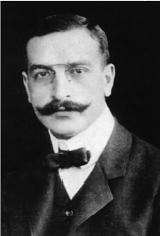Thursday 25 September 2014
In 1920, construction began on what was to become an important new transportation system for Cincinnati, Ohio. Local voters had given near-unanimous support to a $6m (£3.7m) municipal bond, and despite wartime restrictions and shortages, the project began. Little did the city’s officials know that the system they were building would never carry a single passenger.
Five years later, the money had run out, the federal government refused to help and construction was halted. Today, there is an entire six-mile subway system abandoned underneath the Cincinnati streets.
Though Cincinnati’s empty subway is an extreme example, it’s part of a global phenomenon that’s actually quite common. Underground travel has become a familiar routine for millions of urban dwellers, but most commuters are unaware that lurking on the other side of the walls are the remains of abandoned stations, slowly deteriorating. Known as “ghost stations”, they are silent but powerful reminders of forgotten history.
Tom Moran, editor of the website Urban Ghosts and an expert on abandoned stations, says: “For me, what makes abandoned subways more compelling than other subterranean infrastructure is the fact that they were built to cater for large crowds of people – unlike sewers and utility tunnels – and thus contain all the necessary features of a public space, from fire escapes to ornate signage and advertising on the walls. It’s that missing human element that makes them more eerie.”
In the west, many stations were abandoned due to the boom and bust cycles of capitalist markets; in former or current communist countries, ghost stations are symbols of the excesses of authoritarianism. But their histories remain local. Though no longer part of the daily lives of people, each abandoned station is firmly rooted in its city’s past – and may yet become part of their city’s future.

If there is a global capital of ghost stations, it would have to be London, which boasts more than 40. These include North End Station on the Northern Line, which was never used following its completion in 1906, and also many other stations that were closed due to poor user numbers, notably Aldwych on the disused Piccadilly branch line. Urban explorer Bradley Garrett made headlines in 2012 when he was arrested by London transport police for exploring the station. He received a conditional discharge.
London’s transport authority is now planning to sell off some of the disused stations to companies who have plans to turn them into tourist attractions, hotels, shops and museums, according to a report. One estimate places the abandoned network’s value at £3.6bn.
Tom Moran’s favourite London ghost station is in fact an abandoned lift passageway at the much-used Notting Hill Gate tube station. “When it was discovered during construction work several years ago, workers found vintage posters that had effectively been cocooned there since the lift shafts were sealed off in the 1950s,” he says. “You could argue that it’s not the most compelling find ever, but for me it symbolises the very essence of the tube’s forgotten corners, where relics from other eras live on.”
Apart from London, perhaps the best-known city in western Europe for ghost stations is Paris. Several were closed during the second world war, while others, such as Haxo and Porte Molitor, were built during the rapid expansion of the Paris Métro in the 1920s but never opened. Another concentration of ghost stations can be found in Barcelona, whose Banco station is reputed to have been designed, not for the public, but as a secret delivery system to the Bank of Spain. Gaudi station, named after Spain’s celebrated architect and intended to serve the Sagrada Familia cathedral, was similarly never opened. Today it is known for numerous reports of ghost sightings.
Across the Atlantic, the subways of the US faced a formidable foe: the freeway. As car use skyrocketed after the war, subway systems became less popular, and underground stations began to close down. In denser eastern US cities, most rapid transit systems survived, but individual stations were closed, such asFranklin Square in Philadelphia. Yet, not all eastern systems survived:Rochester’s subway was completely closed, like Cincinnati’s. In Chicago, parts of the elevated train network were abandoned due to lack of maintenance funds. But the biggest casualties were on the west coast. San Francisco’s undergroundEureka station was closed permanently, as was the underground hub of Los Angeles’s Red Car system.

New York, not surprisingly, has quite a few ghost stations; the most famous one, City Hall on the Lexington Avenue line, was closed in 1945 because retrofitting it to serve newer trains was considered too expensive. Another station, South 4th Street in Brooklyn, never saw service after funding for the rest of its line was cut. Unlike their European counterparts, American ghost stations stand out for their unassuming pragmatism. The abandoned stations in Rochester, for example, have a distinctly utilitarian feel.
Although other countries on the American continent may not have embraced the automobile as enthusiastically as the US, they’re still home to a number of ghost stations. Toronto’s Lower Bay station was closed in 1966, allegedly due to an overly complicated track arrangement. There is also a small concentration of ghost stations in Latin America: Buenos Aires’s San Jose station was abandoned when one of the city’s subway lines was rerouted to the city centre in an effort to attract more users. And in Santiago, several metro stations were closed as a result of a massive earthquake in 1985.
In these capitalist countries, where one generation’s crisis is the next generation’s tourist trap, many of the stations have been repurposed. London’s Aldwych station has become a favourite for movie shoots, while Toronto’s Lower Bay has become a location for parties during the city’s huge film festival. Cincinnati’s abandoned subway line is occasionally opened for visits, and South 4th Street became a kind of gallery for Brooklyn street artists.
Crisis also spawned the ghost stations of the former Soviet bloc – created not by market fluctuations but overbearing authoritarian rulers. Berlin’s U-Bahn was a particularly noteworthy example. Though all the city’s stations are open today, during the Cold War a number of stations on lines that crossed through east Berlin were closed, sealed, and monitored by armed guards – who occasionally tried to escape to the west by jumping onto moving trains. These stations were poorly maintained yet seen by passengers daily, an eerie phenomenon that, in fact, gave rise to the term “ghost station”. With the fall of the Berlin Wall in 1989, all 16 Berlin ghost stations resumed service.
In Moscow, construction of Spartak station was completed in 1975, but when the housing complex it was supposed to serve was abruptly cancelled, the station sat unused. It has reopened this year to serve the new Spartak Moscow football stadium.
Perhaps the most famous disused subway in Moscow is the Metro 2, a top-secret, parallel subway system reported to have been constructed in the 1940s for the emergency transportation of Communist party top brass. Many doubt it exists, and there are no photos of its lines or stations, but many top Russian officials, as well as a US intelligence report from 1991, have attested to its existence.

In other communist countries, stations have been abandoned for similar reasons. In the Beijing metro, Fushouling station appears to have been built for strategic military use, but was only used to transport rural children to school, running only two trains per day until its closure in 2007. North Korea, though, has Kwangmyong station, which was closed in 1995 because it is connected to the palace that was turned into a massive mausoleum for deceased supreme leader Kim Il-Sung. Naturally, few photos exist.
But further to the east, abandoned stations begin to look more like the west again. Tokyo is home to the abandoned Hakubusukan-Dobutsen station, which, like New York’s City Hall station, was abandoned because it was incompatible with newer trains. Other stations have suffered the same fate as the Santiago metro: earthquake damage. Manseibashi was eventually closed after the connecting train station was levelled in the 1923 Great Kanto earthquake.
Ghost stations around the world make for haunting photographs – Bradley Garrett’s photos are remarkable – not to mention great party venues. But do they have, um, a deeper meaning?
With the rise of Bus Rapid Transit (BRT) and the prohibitive expense of new subway construction (with the exception, it seems, of China), you could interpret ghost stations as a sign of the inherent inflexibility of subway systems. Or you could say they’re a product of the boom and bust cycles to which all cities are prone, especially in the American rust belt: cities like Cleveland and Rochester simply aren’t as robust today as they were a century ago.
But ghost stations have something to say that isn’t just about transportation and the economy. Subways are important ways for citizens to get around, but they’re also important as public spaces. Indeed, by providing an identifiable shared experience, subway systems are often important parts of the distinctive identities of cities like Paris, London and New York. Rob the stations of their healthy bloodflow of regular commuters and they will eventually haunt the city.
Maybe that’s why a recent proposal to repurpose Paris’s abandoned stations as public pools and auditoriums has gained traction. These stations are crying out to be used, not just as pop-up hipster hangouts, but important parts of the city’s public sphere. Garrett, incidentally, generally opposes the repurposing of abandoned spaces. In an interview, he said: “Most urban explorers don’t push for preservation because obviously when you ‘preserve’ something under a heritage regime, you lose a lot as well,” and cited the example of the High Line in New York as a piece of abandoned infrastructure that was “ruined” by being transformed into public space.
Perhaps they are better off left to urban explorers. “Other than filling them in, you can’t really demolish an underground ghost station,” Tom Moran says. “So, while many surface buildings often meet the wrecking ball, ghost stations live on in a sort of weird afterlife, out of sight and out of mind (of most people, at least) but very much in existence.
“Cliched as it sounds,” he goes on, “the fact that they generally don’t go through the normal periodic upgrades that active stations experience makes them like time capsules.” And the best way to ruin a time capsule is probably to open it.











Recent Comments